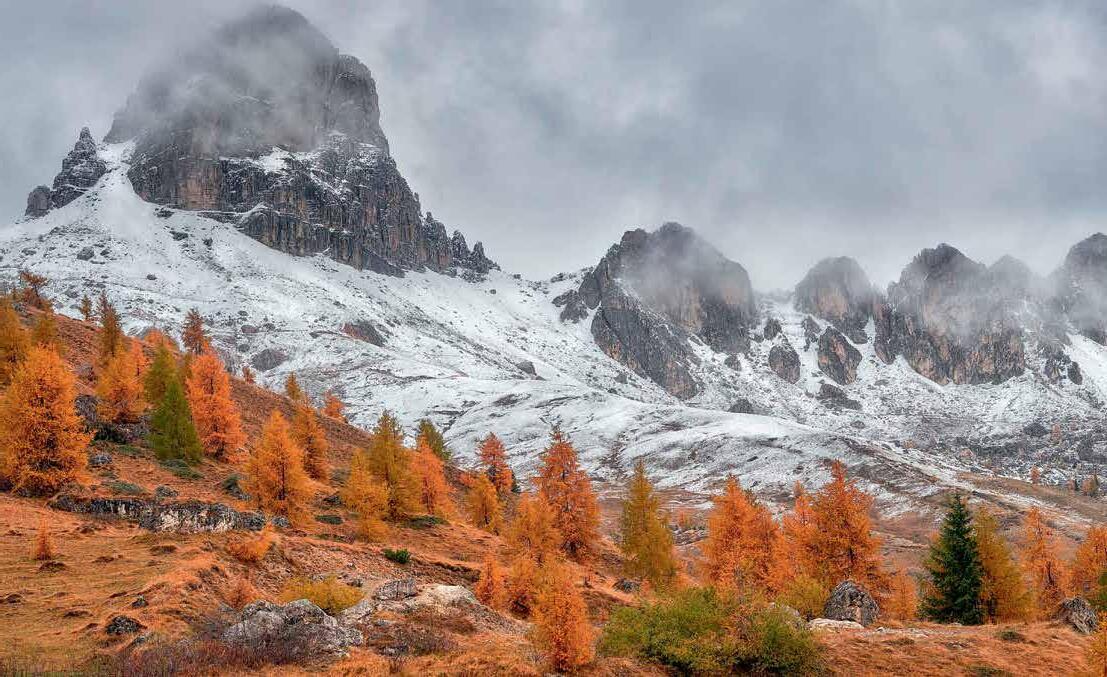




























‘Mouse Year’—unless you are a trout angler, this phrase is likely to conjure up images of a lesser-known Chinese animal year, or more frights for the wife around the pantry. Trout anglers though, especially serious ones, glaze over at the mere mention of a mouse year, to the point of needing to be slapped back to reality.
Such is the impact this event can have on the size of trout around the native beech forests. In short, these trees drop seeds in their billions, given the right conditions, and the mice go crazy on this new protein-rich food source and breed like... well, mice.
The amount of these cute little vermin scuttling about the backcountry can reach staggering numbers in a
few short months, alarming DOC in the process, as their predators (stoats, ferrets and weasels) swell in numbers. It is the food chain and its nature. Unfortunately, native birds become the target next. Anyway, 2019/20 was purported to be the largest of these ‘one in 5-7 year events’ in 75 years! Needless to say, many anglers took to the rivers and lakes to try and fool some of the largest wild trout I’ve personally ever seen. As a keen
the later part of the season documenting this happening, having taken some time off guiding, but with the possibilities of a Covid enforced lockdown looming, I had just six days to hook up with a few close friends and try to catch some of these
Mike Kirkpatrick

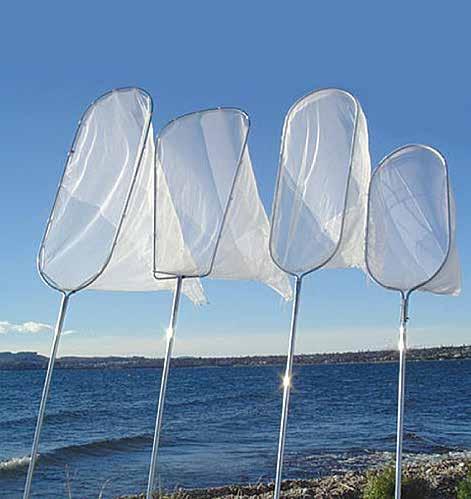
It certainly wasn’t easy, as targeted regularly and their already cagey nature had
by the time we lined them up. ‘We,’ I should mention, was an eclectic mix of young and old, local and foreign, even newbies to old hands in terms of the New Zealand
was one commonality though, all are highly skilled anglers. Leif is a rod designer, tackle company owner and former Swedish
an old client of mine and
while Tom and Hannah are young locals, whose impressive skills belie their age.
days, we battled the wind,
bad luck, and trout whose ‘angler avoidance’ skills were deserving of a Harvard degree. Still, each day we managed a few moments of magic and caught some eye popping brown trout for the ages. Big, deep, thick impressive and equally rewarding.
Fingers trembled as the angler tied on flies, and the cameraman dialed in focus while chances either slipped away or became etched forever as a collective ode to the brown trout of our lives.
A few of the more memorable moments included Leif landing a
12.5lb brown late afternoon on day one, after a run of poor luck and missed
(late evening then early next morning) was another highlight. I popped out from behind the camera
bank after dropping three in a row. A day out with Tom and Hannah was amazing,
landed being quite absurd. My personal highlight was a simply massive mouse fed brown, hitting my mouse pattern at a shallow edge of a small creek just on dark failed.
It still amazes me to this day that my largest brown trout ever, was recorded and made it to my feature movie: INSIGHT - THE TROPHY QUEST.

For anyone wanting a copy of this movie, it can be purchased on Vimeo or direct from me at in the form of a personalised hi-resolution
Although the size of trout this season won’t likely match the past few, catching a trout in a river or lake with a mate is always special and, as they say, trout don’t tend to live in ugly places. Tight lines!
Lockdown provides time for contemplation and back to a calm February day with my brother Craig and dad Stu, down toward the Glen. We’d put the set line down and then moved off to try for a snapper on the rods.
The Boulder Bank is an iconic natural stone wall that stretches 13km from Mackay Bluff to The Cut—the entrance to Nelson Harbour.
because it attracts marauding kahawai and the odd trevally. However, nothing is guaranteed.
We sat dangling lines for ages.
Nothing—nothing— nothing.
Then my rod folded over and the reel lost line. A good solid run ending in head nods indicated snapper, and it felt big. It was in no hurry to roll over and gave while to get to the surface. I have no idea what it weighed but it was the
and the only one caught on the rods that day. Luckily, a few more were caught on the set line, much to Dad and Craig’s relief—but none were as big as mine.
Lockdown is also a time for anticipation: I cannot wait to
Sarah Easton



2.5 tonne braked towing
great rock hopping ground clearance and super visibility
6 speed manual giving you total control
anti braking system ABS
ESP with hill hold/descent control
2WD & 4WD options
all the safety features and mod cons you’d expect.



• Durable & light-weight
•
• Fully customisable with
• Full Installation or
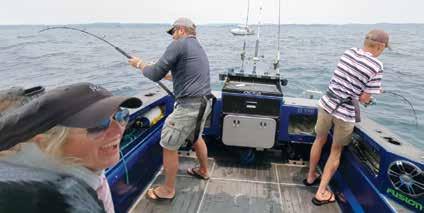



There is a repetitive and persistent social media campaign to undermine the Quota Management System (QMS), asserting management challenges can be overcome by shutting entirely or, at very least, prohibiting bulk-harvest tactic is one being promoted by recreational activists in and around the Hauraki Gulf. Their naïve and simplistic belief that banning that is needed to rebuild imbalances in the marine environment is greedy and ignorant.
But the rhetoric has an audience and maintains momentum because selfappointed ‘experts’ promote and recycle modern urban myths intended to justify the attacks on the QMS and or false?
“New Zealanders are being denied their fundamental right to Untrue. No-one disagrees that New Zealanders have a fundamental right to catch agrees that everyone should or for a feed. After all, most
In a previous column that highlighted aspects of the Government proposals to revitalise the Hauraki Gulf, Daryl Sykes referred to initial social media responses from recreational fishing representatives being symptomatic of a sector in denial. He now challenges the anti-commercial fishing rhetoric that flourishes on social media and busts some…
of experience or skill and from too many recreational the same locations. For example, anchoring, then drop lining, jigging, or soft-baiting above seabed features that are marked on tackle shops or published in magazines. The right to guarantee of success.
“Fish were given to the commercial sector for nothing in 1986 False. The transition to the QMS in 1986 was not made at “no cost”—commercial not been ‘given’ anything..
The allocation of quotas, based on the audited catch histories of incumbent permit holders in 1986, was a continuation of their existing permit rights, albeit in a catch histories were to reduce overall commercial catch to recommended levels. Some compensation was paid for part (not all) of those reductions, but had they not been made, the permit holders would have, and could have under the terms of their permits, prevailing input controls. It seems to have been forgotten that the QMS was
and/or annual catch entitlement (ACE) requires investment and a strong commitment to a career in
“Setting targets above BMSY will result in more
A 50/50 call. This is a regular catch-call by LegaSea and their supporters. It has an intuitive appeal and in principle has been pursued interests for many years. But setting targets above Bmsy (Biomass maximum sustainable yield) may not make any difference to
the target is set for a quota management area.
spatially concentrated—for example, either close to the shore or above reefs and rocks. A higher biomass will not necessarily improve and maintain abundance in all places where recreational
Setting targets above Bmsy will also fail to produce the intended result if the catches taken from those stocks are not routinely constrained to the allowances made for them. Only commercial catches—


whether it is meeting, undershooting, or exceeding its allocation. This lack of reporting compromises the sustainability of the QMS. The perils of this lack of management are well demonstrated by the Marlborough Sounds blue the commercial sector was excluded. The Ministry of Fisheries (MFish) reported continued to cause localised depletion of blue cod stocks in the Marlborough Sounds. Other examples include Mimiwhangata (closed to severely depleted to the extent that total protection is being proposed); numerous Auckland regional commercial); and iconic and pāua on the Wellington South Coast and along the Taranaki coastline.
No reliable study has ever been made of the impacts of recreational
many of the strongest advocates for reallocations of catch away from the commercial sector to the recreational sector, have
Charter boat operations and businesses selling boats and and growth of recreational
Individual recreational daily bag limits are not food”—but allow successful hundreds of kilograms of some species on a daily basis. Rock lobster bag limits allow for an individual catch valued at more than $220 on the local market.
But more importantly, not all New Zealanders, or visitors, have the desire supplies their needs through fresh, sustainably harvested catch, supplied to the wholesale and retail markets and to the hospitality trades. Forget the myths, search out the facts. New Zealanders are fortunate to have wellmanaged and abundant rights come responsibilities. Are you meeting yours
Sustainability, environmental impacts, animal welfare, personal safety and health, maritime rules—there are no free feeds.
But with the right comes responsibilities. Current regulations rely principally on daily bag limits and minimum legal size restrictions, along with minimal gear restrictions. It is an old recreational adage
Tales of bag limits being caught day after day by the same individuals suggests that the “fundamental right” is being liberally exercised. The inability, of some, to
implemented under pressure who, throughout the early 1980’s, lobbied Government for what was initially referred to as an Effort Reduction Scheme (ERS).
Moreover, almost all of the quota that is held today has been purchased on the open market. Since 1986, ownership of most quota has turned over multiple times.
Quota shares for species brought into the QMS since 1986 have to be bought from the Government—catch history based allocations do not apply.
Ownership of quota
not recreational— are known with any certainty, and only commercial catches can be effectively constrained. The “above Bmsy” policy will fail unless all catches are similarly managed.
“Recreational catching is benign and does not cause impacts on the
False. The recreational sector is not constrained to allocations set for it. No credible and reliable information is gathered about recreational catch rates and therefore there is no way of knowing
effort, discarded nylon lines, lost hooks, sinkers and set nets, oil residues from outboard motor exhausts, litter from vessels, and waste discharges, including sewage, all are likely to have adverse effects, particularly in situations where recreational effort is concentrated on localised areas.
Call this one a ‘semi-myth’.
The inference is that the commercial sector is driven by greed and therefore noble pursuit. However,


CLICK & COLLECT
CONTACTLESS DELIVERY OR STORE FRONT ORDERS


ONLINE OR EMAIL ORDERS FOR CONTACTLESS DELIVERY

ALEXANDRA E. alexandra@superliquor.co.nz
P. 03-448 7187, https://alexandra.superliquor.co.nz/
AMBERLEY E: amberley@email.superliquor.co.nz
P. 03 314 7724, https://amberley.superliquor.co.nz/
GREYMOUTH E. greymouth@superliquor.co.nz
P. 03 768 4400, https://greymouth.superliquor.co.nz/
HORNBY E. hornby@email.superliquor.co.nz
P. 03 344 2044, https://hornby.superliquor.co.nz/
ILAM E. ilam@email.superliquor.co.nz P. 03 358 5487, https://ilam.superliquor.co.nz/
LORNEVILLE E. lorneville@superliquor.co.nz
P. 03 235 8033, https://lorneville.superliquor.co.nz/
MOTUEKA E. motueka@email.superliquor.co.nz
P. 03 528 1113 , https://motueka.superliquor.co.nz/
QUEENSTOWN E.remarkablespark@email.superliquor.co.nz
P. 03 442 9801, https://remarkables.superliquor.co.nz/
TAHUNANUI E. tahunanui@superliquor.co.nz
P. 03 548 6623 , https://tahunanui.superliquor.co.nz/
TAHUNANUI SOUTH E. tahunanuisouth@superliquor.co.nz
P. 03 539 6084, https://tahunanuisouth.superliquor.co.nz/
RICHMOND E. richmond@email.superliquor.co.nz
P. 03 544 6183, https://richmond.superliquor.co.nz/
WANAKA E. wanaka@superliquor.co.nz P. 03 443 1120 , https://wanaka.superliquor.co.nz/
RANGIORA E. rangiora@email.superliquor.co.nz,
P. 03 313 6358, https://rangiora.superliquor.co.nz/
*more stores delivering nationwide, to locate your closest store go to: https://www.superliquor.co.nz/storelocations
When I first got my hands on Black Magic’s new Hyperglide 13x Braid, I was impressed at how smooth and well-built the line looked. The ‘Tekapo Blue’ colour was an excellent choice for a casting braid, as something closer to the water’s colour is very important for stealth casting to wary fish. I was interested to see what benefits the braid had casting to trout in very clean water, and fishing in saltwater with a combination of lures and lightly weighted baits.
Trout are generally very line shy; they notice some wouldn’t. So, putting a brightly coloured braid over the top of them tends to scare them. The light blue colour blends in with a blue sky when looking up. It also doesn’t look out of place when looking upstream underwater, as most of the blue tinge, and the braid combines perfectly with this.
I set some 8lb Hyperglide onto a 2500 size reel, attached a light leader and began to walk the riverbank, a small Black Magic BMax 50 lure, I casted it out close to the structure, mainly the overhanging willows
braid cast well with very light lures. I even tested it with weighted nymphs and it shot those out too. The braid casts incredibly far and there weren’t many places I cast to, even when the river was very wide.
Any small bump from the bottom, or a trout grabbing the lure, sailed up to my rod tip letting me set the hook quickly. Within short succession I had two trout to the bank. They put the braid through its paces, with
one ripping off a 30 metre run up the river that had me scrambling to follow. This braid had more than enough supple feel and smoothness through the guides for me
The moment to try it on some big rainbows (averaging 5lb) came in my decided to try some light paddle tail soft-baits on a drop-off near a stream mouth. I wanted to test how the braid performed on the sink and for blind strikes deep in the water column. After casting out, I kept the bail arm open and watched the braid leave the reel. Some other braids I have used can get caught up around the spool but I was pleasantly surprised to see it was running out with no hitches.
It was easy to see when my lure touched down and then engage the reel to begin the slow retrieve up the drop-off. The hits came quickly and even the slightest touch was sent right to the rod, telling
Finally, I had a full commitment and I struck into the grab; a big jack sailed out of the water testing the braid well as it screamed out 30 metres. After a short session, I had two large jacks averaging over 5lb and braid was casting and how it

Testing the 16lb braid in saltwater was my next plan, targeting kahawai and gurnard on slow jigs. As I noticed in freshwater, the line has particular strength in cast distance and also on the drop.
Kahawai tend to hit on the way down and require a good indication when a jig to the party and required a little coaxing to bite. I easily felt the nips at the skirt and ‘fed’ the lure to them before a good hook set into their jaw. Kahawai were totally different, smoking the lure, seemingly from nowhere,
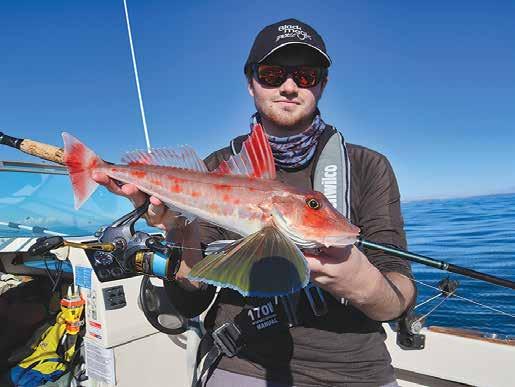

but the Hyperglide easily handled the load on the rod.
Later in the day, I tried
see if I could put some real hurt onto the braid and really wring out some performance. I got a double of 2.5kg kahawai on and it was great to try and push the limits of the product. The 16lb braid ate it for breakfast.
Overall, I thought Hyperglide was an excellent braid for both freshwater variety of species, excelling particularly in distance casting and soft-baiting applications. The colour is uniquely different, adding some good stealth
Highly recommended.



• 13 strands - 100% Japanese fibres woven around a strong central core
• The round structure, coupled with its fine diameter, means less friction as the braid glides silently through your guides, providing a noticeably smoother and longer cast
• Less drag as the line sinks through the water column, improving lure presentation and feel
• Minimal stretch delivering a high level of sensitivity
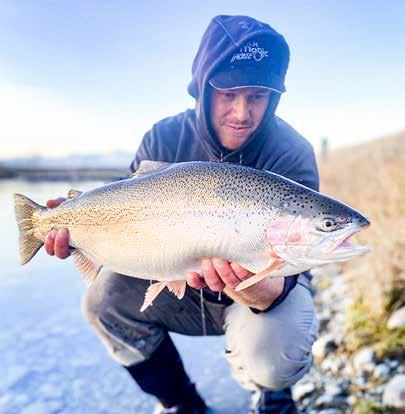
www.blackmagictackle.com/hyperglide/
Trout season is upon us and everyone’s asking, “What gear are the Balzer team using?”
“Catching trout was one of my passions growing up in southern Germany. Walking along the river, spotting wildlife—everything from birds to beavers and boars— stream and waiting for that strike,” says Daniel Eisenhut, owner operator of Balzer NZ.
“I’m a big fan of telescopic rods and Balzer’s range of German made telescopic rods are great to use and can easily stash into a backpack,
which is a practical way to safely get your gear undamaged through the bush and scrub when seeking out those remote spots.
With some collapsing to just over 400mm, there’s every reason to have a ‘ready in your boot or in a pack on your touring bike at all times,” says Daniel.
Balzer’s two-section trout, micro spin and spoon rods in their latest high-end and ultra-light design have great action and are made to enviable German quality, in every way.
“My current kit of choice is the Trout Collector reel at only 210g, with 0.08 braid matched with the Trout Collector 6 rod starting at 71g—it doesn’t get much lighter than that,” says Eisenhut.
“I also carry a range of Balzer lures with me, around 20-30 in different shapes, sizes and colours— enough to satisfy the pickiest trout,” Daniel says.
“This year, Balzer NZ started bringing in a larger variety of trout lures for Kiwi anglers. Some of Balzer’s lure designs are completely new to New Zealand


Daniel Eisenhut is loving the NZ trout fishing scene
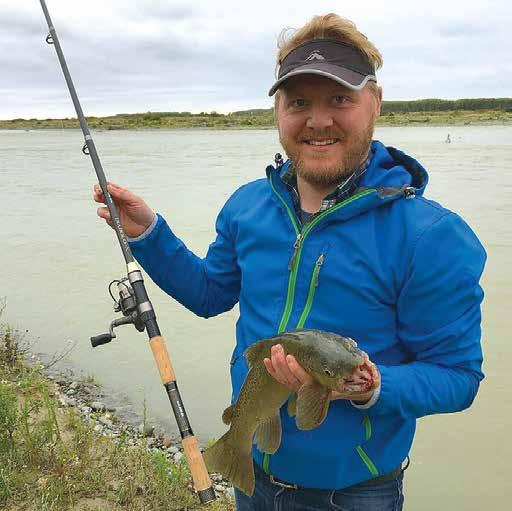
and already there is great feedback, so much so that we plan to double the range by the end of this year,” enthuses Eisenhut.
Keith Bedford aka “trout_ bomber” has been using the lures successfully around the Manawatu region and has a collection of Balzer rods and reels from the Diabolo X series.
“Living in New Zealand, even more. There are and an impressive range of productive waterways for anglers at all levels. If you want to chat about what gear is right for you, just give me a call,” says Eisenhut. www.balzer.nz


Compared to a lot of others, I’ve led a relatively quiet life. While my chosen paths such as the Police, running an Animal Control unit in Rotorua and being married to Lynne the Ruthless for 44 years has put me in some interesting situations, I’ve managed to avoid serious injury (that could however change in an instant, due to the marriage bit). Some situations have been both dangerous and amusing. Here’s one you might get a giggle from.
One day, while running the Animal Control unit, a call came in regarding a pig in a horse paddock, adjacent to a residential area. This was pretty common. Lots of hunters brought piglets back from the bush and the odd
one escaped.
On arrival, I was greeted by a large boar with a pair of pretty impressive tusks. He was not friendly. I know this because, when I got behind him and tried to grab his leg, he turned and charged me. I’m not one to brag but my speed and agility in getting out of the paddock was something to behold. The plan then was to shoot the mongrel but a 12 gauge with buckshot in a residential area put me off that idea. Many times over the following 20 minutes I regretted that decision.
I hunt ducks, pheasants and other small game. I’ve shot a dozen or so deer but I’m no pig hunter. One of my staff however was a pig hunter and, when I phoned him,
he had this brilliant idea of bringing a couple of his dogs out. He assured me they would catch and hold the pig. Yeah right.
He and another young were released but instead of stopping the bloody thing, it effortlessly brushed them aside, went through the fence, bolted across a road and into a residential park—with the dogs and my think they were enjoying themselves, while all I could envisage was the pig being bailed up in some old lady’s vegetable garden, or worse, on her back porch.
I was, at this stage, mentally compiling my letter of resignation. Fortunately, just between
the boundary of the park and the houses, there was a deep drain. When I arrived, one could have thought this was a bail in the middle of the Urewera’s and not urban Rotorua. The pig was still angry, the dogs were ripped their best to grab.
In the end, good triumphed over evil and the pig was tied and taken to the pound, still very angry. One of the dogs cost my operating budget a shit load in vet fees and the pig assisted a tutor and group of young guys in bushcraft. It was stuck, singed, gutted and put in a hāngī I should have handled it differently.
I should have shot the bastard.
The montane run-off has gathered all before it— loose shingle off the alpine screes—rotting vegetation
insects and small animals— all awash. Strands of rivulets splice into ever-larger side creeks and these cascade into the upper-valley as one growing entity.
volume and momentum, accumulating ever-larger debris. Shingle, gravel, rocks, boulders, all rumble and shift. Tiny twigs are joined by smashed boughs and uprooted shrubs. As the frothing melee speeds toward the sea, it gathers everything before it, uprooting trees and unearthing mighty logs. These become projectiles, which are hurled upon the single-lane bridge midvalley.
The bridge holds fast for many an hour as projectiles pummel it but, eventually, with foundations shuddering and hairline cracks opening gives way. It joins the pump sheds, the fences, the all translocated from stormlashed land to raging river.
Weeks later the uppervalley remains isolated, all
access routes devastated, the bridge a forlorn waterfeature downstream of its foundations. The forest establishment industry is in crisis. Hundreds of thousands of baby pine trees are ready to join their older siblings on the hillsides all about. They must get planted now, while the weather is cool, the soil moist and the silviculture workers available to forest management companies. That, my friends, is why I’m aboard a helicopter
Marlborough-based planting crew.
Every morning we ready day’s requirements crammed into our various bags and the cartons of trees packed into cargo nets. To get the crew, the trees and myself high into the hills, it takes
Three more to exit those same hills late in the day. The crew consists of a dozen young men drawn together from all parts of the world. I am the only representative for Kiwis, for women and for the silver-haired portion of the population. Together our skins range in hue from

lily-white to inky black, our languages are many and varied. Yet we are a cohesive team, here to establish a forest, to share humour that takes no particular language to understand.
For more than a week we roll-on and roll-off the helicopter, come rain, snow, frost or gale. The wildlife is disrupted at dawn and at dusk by the noisy, fumy taxi, which is ours, so sightings are rare. Until today. Today, as ‘the boys’ comb through last year’s planting looking for empty spaces in a method known as blanking, they come across a surprise. In a small patch of matagouri, interwoven with meagre tendrils of lawyer and a few scratchy bracken fronds, a large multicoloured sow has bedded-up for the day. She is a mature
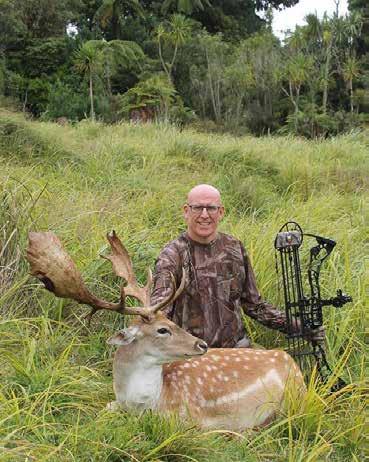


pig, experienced in the ways of aerial hunters, stalkers and doggers. She has learnt her best defence is to remain absolutely still when danger is imminent.
She has lain still as the
creating a downdraft, which stirred the loose debris all about her. The stench of avgas scalding her sensitive snorkel. She has lain still as the crew unloaded trees, clanked spades, urinated, yahooed and crosshatched the hillside blanking.
She lay listening to their various tongues, their snatches of native song, their cooees and their curses. Her heartbeat must have redlined a hundred times. Her instinct for survival so strong her nerve never broke. Until now.


planter pushed through the matagouri patch, his canvas chaps rustled the very thorns the sow lay amongst. His spade glanced off the subterranean rock time and again as he looked for soil to plant his tree. That was when the sow broke cover, scaring a frightened, “Aaiieee” from him.
Despite being scattered like windblown seeds, every man who heard the yell paused their work and glanced at once towards the scene and in them all, each and every one, was the spontaneous reaction to hunt and kill the prey, which had appeared in their midst.
Prey the sow certainly was, for she was fat and full-bottomed. Luckily for her the hunting party was unorganised and armed
only with spades. As she broke this way and that, each man turned her back toward the centre till she was
In this she was not alone, for the men were becoming exhausted too. They urged each other on, cheering and laughing, herding the sow then hurling their spadespears with enthusiasm but not skill. A scene so totally primitive if not for hi-vis clothing, spiked gumboots and footage garnered on iPhones.
Eventually the sow outran the crew, her skin intact. The hunter-gatherer instinct cooled, the modern-day men regained their senses and their breath. The mighty dollar called once more. They would not go hungry tonight. The supermarket will save the day.
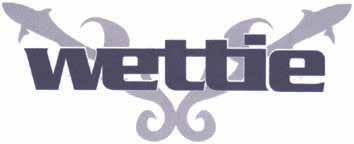



The lockdowns have a huge effect on us all; a lot of businesses closed and people stuck at home. So much is suddenly on hold, so whilst matches are being run around the world, and we are getting to see the results online, ours are being cancelled or postponed. Who knows if they will be able to be run as we change levels in different parts of the country. This is due to the limited numbers being placed on how many people can be at an event, which is quite low. To say nothing about the loss of entry fees, with Auckland shooters not looking like they will be able to join us.
This has put a huge amount of pressure on clubs, with those few at the front doing the work to reopen and get us back on track with the different Island and
Nationals competitions— albeit with a lot less time than normal to make this happen.
Lockdown for me has meant no work, so loading has taken up a bit of time, to say nothing of a few jobs in that everything is ready for when the country gets a full green light. I now am set for a few matches.
The pressure impacts people in di erent ways, with work, home and money issues taking a toll on people.
Often the ability to head to the range or for a hunt helps us cope. Stress and pressures due to things we have no control over is very real. Add to that the challenges of accessing support from professionals without the risk of nosey beaks informing the police and, as such, risking your a simple talk, an idea about what to do or a place to go makes a big difference for a person.
Trust is a big issue now
about your personal issues has changed with this government. If you hold a doctor or health professional deals with you on mental health issues—stress, depression, anxiety—it is strongly recommended they advise police. You just have to wonder what the hell they were thinking writing a law that stops people seeking help if required. This is another law written by people who just aren’t thinking.
Most of us are lucky, as we belong to formal clubs who have a strong back-up system with our fellow members. We are there to support each other but this may not be the same for solo shooters in New Zealand. For them, it is close friends, but whoever you have, use them and stay safe.
With luck, this will be our last round of lock downs and we can start to rebuild our country. Which includes spending more time on the range or in the hills. Stay safe everyone, keep in touch with your fellow shooters and be there for each other.

From its beginning in 1993 at the Spa Hotel in Taupo the SIKA Show has grown steadily year after year with more and more hunters and outdoor lovers being drawn to the annual hunting competition event while the number of trade exhibitors also continues to grow.
Covid 19 caused the cancellation of the 2020 show so demand and appeal for this year’s show is even higher, particularly as we’re spending more time in our own backyard due to onerous travel restrictions.
So the time had come to relook at the future and plan accordingly for the SIKA Show to preserve its iconic status so that all NZ hunters continue to enjoy this unique spectacle for years to come.
After unsuccessfully trying every option to keep the Show in Taupo (or second option Rotorua) we made the agonising decision to re home the event to Mystery Creek in Hamilton which is conveniently located just minutes from the airport.
The “walk in ready” all weather venue with ample free parking helps provide

financial security for all involved and at the scale needed for financial viability.
There were significant oneo set-up costs in Taupo in excess of $200,000 and having no realistic way to expand visitor numbers the future for the show was looking pretty grim particularly with no revenue from SIKA Show 2020. The show had also been for sale for 2 years with no takers.
With the new venue comes new opportunities and already we’re on the fundraising trail to really
make a di erence for organisations like The Central North Island Sika Foundation and hunter based conservation projects through the NZ Game Animal Council iniativeHunters for Conservation. SIKA Show is Australasia’s largest Hunting Event and Tradeshow and 2021 will be the biggest yet…there’s stacks of room so many more avid Kiwi hunters and huntresses of all ages can come and enjoy the event.
www.sikashow.co.nz
www.sikafoundation.co.nz
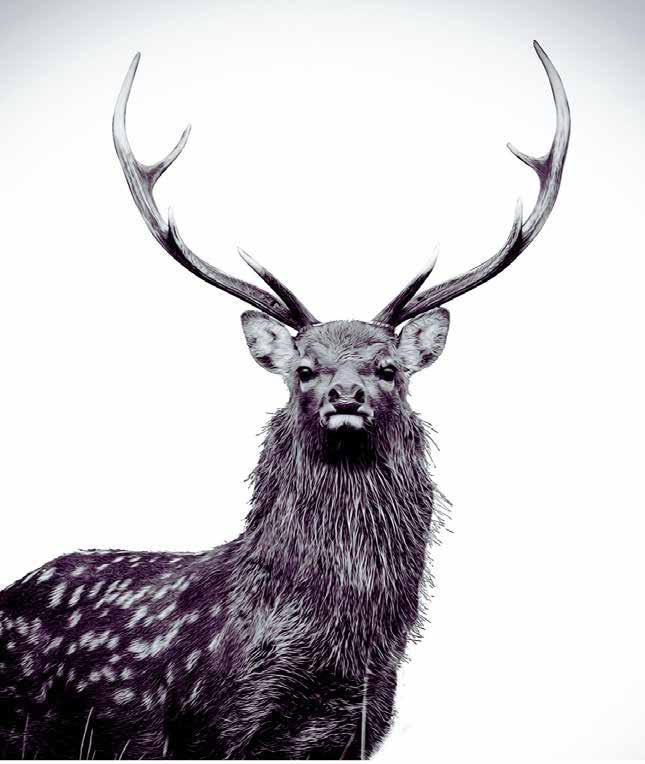

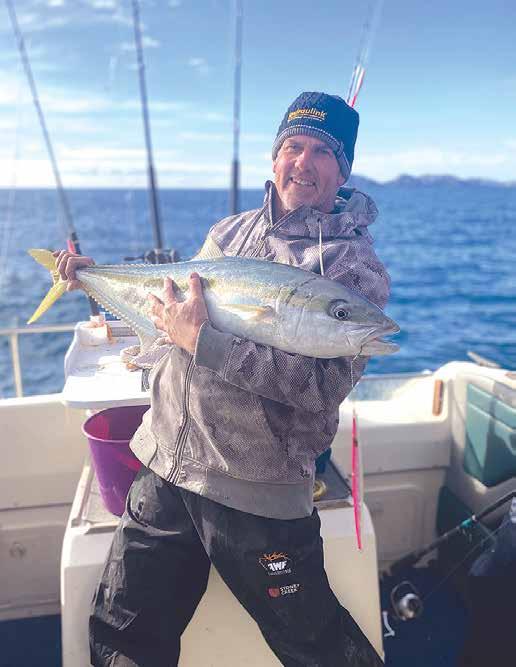
packs and if you have ever been fortunate enough to see them underwater, it is an amazing sight.
have often experienced the sensation of cloud covering the sun, only to look up and see a pack on inquisitive kingies dropping down through the water column, circling like Messerschmitts
dive. Stuck in a vortex, you can only watch in amazement as these graceful but sinister looking predators circle and eyeball you before disappearing, with a shrug, leaving you feeling a little
once tried to count a big school as they glided around me about four deep, a giant funnel of yellow and green that reached right up into the green murk above me. I got to 75 before losing count. From the surface, you can get a picture of how they hunt prey by watching them on the sounder. Find a
show up at different levels surrounding the school. This gives an indication of what depth to target them with jigs, so you are not wasting
On a recent trip to Stephen’s Passage, d’Urville Island, Kevin Cline and his mates did just that—locating




Tatonka is a well known outdoor equipment brand with hunters but most wouldn’t know that it is a family owned and operated business in Germany. All products are made in their factory in Germany - from the design to the last stitch, every single part is done by their sta in Germany.
All Tatonka products come with a comprehensive two year warranty and they believe in the functionality of their products stating they have “lots of sensible functions and no unnecessary extras”. When you buy Tatonka you know you are getting the best. With such a huge range, which one product would you start with?
Shooters Supplies are proud stockists of Tatonka outdoor equipment products. Come instore or visit our website and have a look at our range.
www.shooterssupplies.co.nz


their relative location in the water column before dropping the jigs. A bit of guess work is required to time the drift so the lures are working the appropriate strata of water as you move is critical, especially when the kingies are wary. You snag one and then the school goes to ground.
On this occasion, colour was important too, with the kingies being in the pink, so to speak. Kevin was using a favoured pink knife jig and
Then it was lights out and time to go chase something else.
For the Mustang, hunter, fisher, tractor, car enthusiast, man-cave and more, there is a sign here on display at our show room to suit everyone. New stock arriving daily now for Christmas so visit us at Ellis Street Auto, Ph 03 542 4035 104a Ellis Street, Brightwater, Nelson From only $30 these signs make amazing gifts






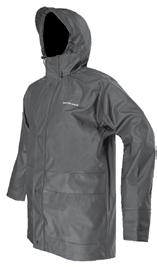


I am pleased to announce that the Department of Internal A airs (DIA) has approved Fish Mainland Inc’s application for charitable status.
Success came after the Board of Directors devised required amendments to Fish Mainland’s Constitution, which hinged on demonstrating a purpose that is exclusively charitable.
According to DIA, the promotion of sport and recreation is not considered charitable unless it is how another charitable purpose is pursued, such as advancement of education or protection of the environment.
DIA instructed us to amend our Constitution to clearly state charitable purposes and to be more inclusive of all interests, despite our collaborative approach for ensuring sustainability already in place.
Accordingly, Fish Mainland’s purpose is now to coordinate and assist the South Island marine fishing community in restoring and sustaining fisheries resources for the benefit of all who fish in the waters of
the South Island.
The Board recognised several benefits to charitable status:
First, it allows Fish Mainland to apply for funds from foundations that only fund registered charities.
Second, it also allows Fish Mainland’s donors, including members, to gain tax credits.
Finally, the Board considers it better reflects Fish Mainland’s focus on the sustainability of fisheries and the marine environment, along with our inclusive and collaborative approach.
In other words, the Board agreed that a charitable purpose best signals what is needed for Fish Mainland to be relevant and reputable in addressing the increasing complexity of fisheries issues.
One of the more complex issues is the protection of dolphins. Maui’s dolphins are considered nationally critical. And, the last coalition Government had to grapple with the threat of legal action by Sea Shepherd, which became the driving force behind regulations that banned fishing methods that could


incidentally kill or seriously injure Maui’s dolphins whose habitat is along the west coast of the North Island.
While the South Island regulations were ostensibly driven by threats to Hector’s dolphins, the regulations appear to be more a direct result of that coalition Government’s aim to eliminate set netting, along with the Department of Conservation’s longstanding e orts to curtail any fishing method where possible.
To be clear, Fish Mainland does not support nor condone fishing practices that could incidentally kill or seriously injure dolphins or other protected species.
That said, we do question the alleged threat posed by recreational netting in some areas, given the dearth of information on recreational fishing and the dubious assumptions used in modelling that was purported to be scientific rationale for banning netting even where dolphins have never been sighted.
During this past year, we repeatedly requested that MPI o cials and the Hon David Parker meet with
fishers in Motueka to hear their concerns about the consultation process and the ban applying to inland waterways of Golden and Tasman Bays that do not pose any risk to dolphins. Each request was declined. Recently, the Hon David Parker replied, “There is no new information to review the decisions [to protect Hector’s dolphins].” This is an odd reply given the whole purpose of o cials or the Minister meeting with fishers is to gain new and critical information that should have been considered when the decisions were made.
Nonetheless, we organised a meeting with fishers, Fish Mainland members and non-members alike. It was scheduled for 22 August in Motueka, but Alert Level 4 stymied it. The meeting will be rescheduled and re-advertised as soon as practicable.
If the Government isn’t prepared to discuss local fishers’ evidence and no-risk solutions, then we’ll proceed with filing a complaint to the Parliamentary Regulations Review Committee.
Becs Greaney
Fishing is a family affair in our household and it is the one thing that can motivate early rising. Perhaps its the prospect of a day on the ocean together but, more likely, it’s the anticipation that maybe, just maybe, today will be the day of the big one.
On this occasion, our
near the spat farms, off Kaiteriteri. So we left home
with my daughter Shania and son Liam and launched in the dark, which proved to be a successful strategy, with Shania catching a snapper weighing over 16 pound.
I then landed one just under 16 pound and Liam was not left out with a 14 pounder. All Our PBs!
An early start but it was so worth it, catching these beauties just on sunrise



The aim of Fish Mainland is to provide a uni ed voice for the South Island marine recreational shing community. Its aim is also to demonstrate the ability to work respectfully and collaboratively with others to nd workable solutions that provide the best public outcomes.
Its vision is a healthy and abundant marine environment in which recreational shers have an equitable share of available sheries resources and are respected partners in management decisions.
The recreational shing sector is far more numerous, diverse and unde ned than the commercial shing sector and Iwi shing interests. As a sector, recreational shers remain largely unknown, except for a small proportion with membership to shing and boating clubs
If you are interested in and supportive of recreational shing and/or sustainable sheries management practices then become a member of Fish Mainland today
• AkeydevelopmentforFishMainlandisitsSouthIsland RecreationalFisheriesPolicy.
• ItspurposeistoguideandcoordinatetheactionsoftheSouth Islandrecreational shingsector,theCrown,Iwi,other shing sectorsandinterestsinrealisingopportunitiesandmeetingthe challengesfacingtherecreationalsectorinshared sheries.
• Shared sheriesarethosewherecommercial,recreationaland Māoricustomary shershaveasharedinterest,andtheyvalue theirsharequitedi erently.
We launched our Yukon and Pulsar products into the New Zealand market 10 years ago. Back then, consisted of Generation 1, tubed devices, followed shortly afterwards by the Pulsar Digisight, which has since undergone ongoing performance and functionality improvements making it the best digital available.
hunting experience was shooting rabbits in a vineyard near to Richmond in the Tasman District. These rabbits had become very gun-shy due to my shooting them with my suppressed BRNO Model 5 .22LR on
I could approach to within easy shooting range, but in the end they would take danger. A Yukon Gen 1 night
fortunes completely. In fact, it introduced me to a whole new way of hunting.
how easy it was to approach these ‘extremely spooky’ rabbits in darkness. Working upwind, I found that many of my shots were at 25 metres or less. Due to the close ranges that I was shooting, I changed from my BRNO to a suppressed Webley
The PCP and Gen 1 Yukon Sentinel 3x60 night vision sight proved to be a deadly combination.
Though the Gen 1 Yukon Sentinel proved highly successful, the new (2011) Pulsar Digisight N550 was a noticeable jump in performance. A higher resolution made for easy placement. However, an unexpected downside was distance estimation. I found
that most of my misses were caused by underestimating distance. The rabbits looked so big and clear that many of my shots were falling short. Fortunately, the Digisight had multiple reticles, including
improved my shot-to-kill ratio with practice.
Pulsar’s current range of digital night vision
better. Larger sensors that are optimised for near infrared provide a clearer image, better zooming capability and lower light performance, giving the hunter an optic that is ideal for pest control.

The Pulsar Digisight is now fitted with an accurate laser rangefinder which adds a new level of precision, maximising the advantages of a function rich riflescope with an exceptionally clear image.

I am lucky enough to have tried out a few different thermal imagers over the years and I must say they have come a long way, this technology has moved forward in leaps and bounds
Most recently, I have been using both a Pulsar Helion and the Pulsar Axion side by side and must say I am very impressed. Both have their pros and cons but are
The Helion is amazingly clear and can pick up the tiniest heat signatures
over vast distances. A new Firmware update has increased picture detail with a noticeably more crisp image. If you have an existing Pulsar thermal that has StreamVision capability, I fully recommend updating the Firmware. Pulsar Firmware is free and it made a huge image difference.
The cons with the Helion is the size. It’s not as compact as the Axion and can’t slip into the pocket like the Axion but for the extra image quality it’s worth the effort to
Now my two cents about the Pulsar Axion. This is a perfect unit for anyone on a budget or wants something compact that can slip into most coat pockets. It’s a handy size and the detection range is great. It really packs a punch for its size. The fact that it’s small generally means I use it more often as it’s right there in my pocket ready to go. It saves a lot of time scanning with binoculars looking on slips and gullies as even if the animal you are hunting is behind light scrub or bedded
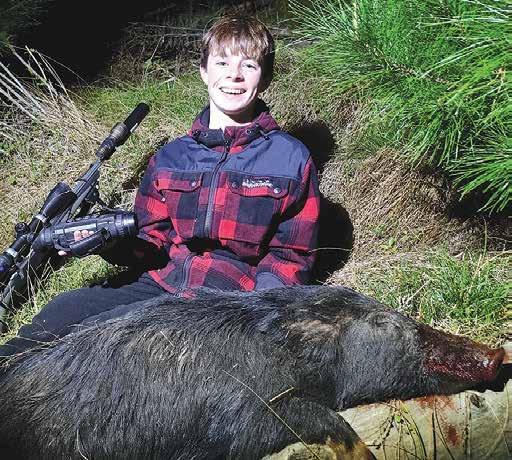
in grass you will probably still see it with thermal.
If you are a professional pest controller, a thermal should be in your hand all the time. They are a tool that is needed to be more
The battery life on these units is amazing and so battery in my pack but very rarely need to use it. The Pulsar have many different colour image options and I fully recommend going the black and white with red high heat signatures. It makes it very easy to scan and pick out animals. There are also many functions like digital zoom as well as brightness and contrast and these are easy to change in
of a button. When the sun drops down I tend to turn the contrast up and the brightness down. That’s what
A headlamp that has a red light that you can use to navigate your way around in the dark is a lot less alarming to animals and sometimes they won’t even notice it.
light to shoot the animals I have found it best to get into the habit of using your opposite eye that you shoot with to use with the thermal as that way your unfocused eye from the light of the thermal is good to go when
The new Pulsar Digex o ers the same performance as the Digisight, but housed in an elegant 30mm body, ideal for mounting to any sporting rifle using traditional mounting rings. I will provide more about the Digex in future articles.
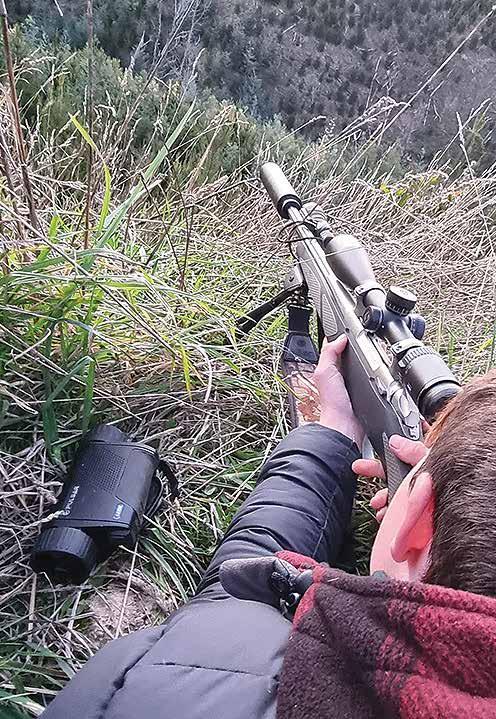
the light comes on. It takes a bit to get used to but it sure makes a difference.
If you are interested in thermals but for some reason or another you are not convinced that they are one on and get their opinion about whether it has made them more successful or not.
The price may be what puts you off but have a think about other ways to justify the purchase. I have heard of all sorts of uses for thermal handhelds in the working self employed what is your
Would detecting heat signatures be handy for you?
• A farmer looking for stock or carrying out pest control?
• A builder looking for heat loss spots or locating studs in a house.
• A plumber looking for hot water lines.
• A mechanic looking for exhaust leaks or heat loss in the cooling system
This is now tool in the tool box and the accountant can put it as a business expense as it will be a tool you have bought for work. You can thank me later.

In their native India, they were the prey of tigers so developed sneaky, stealthy habits. Over aeons the trait was hardwired into their genes so now the iconic sambar of New Zealand still behave as if a large cat is padding at heel. Despite their enormous size—
up to 250 kg for a big stag—they are challenging to hunt, di cult to spot (even in the open) and incredibly alert. Hunters must take nothing for granted and utilise all their skills if they are to be successful in taking large sambar.
Only two herds exist in New Zealand, one in Bay of Plenty and the main one in Manawatu, predominantly on private land. Big stags are solitary, except during the rut, and generally feed late evening, often emerging under cover of darkness and retreating just before shooting light. Getting the drop on a large sambar is not easy.

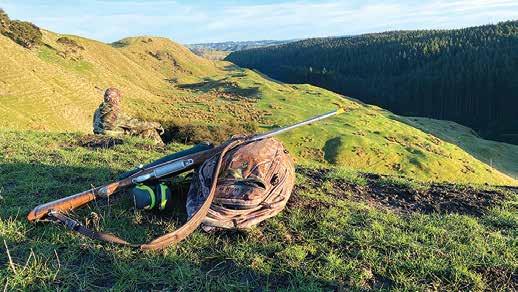
.ice rain. The country was beautiful—a long pastural valley fringed with kanuka and native forest laced with swamps— but it seemed impossibly small. It held animals, for sure: sheep, cattle… and gobblers; turkeys wild and plentiful. Then there were peacocks—and hens, but was there room for these big brutes of deer? I had reservations.
It was a case of ‘let your bum do
the walking while your eyes do the stalking’—get a wet arse while you walk your eyeballs through a good set of binos. Swarovski EL 10x42s was my preferred kit: quality gear pays big dividends long term. You need to get in place early and make yourself invisible, then scan, scan, scan until that last light. Sambar are a dull chocolate colour but blend unbelievably well into

Due to bad weather and commitments, the window for my first sambar hunt opened toward the end of the rut, late July and early August. The ground was sodden, saturated from a belt of recent southerlies but the days ahead unfolded relatively fine, apart from the odd ski of



the surroundings, merging like milk on a blotter.
However, I did have an ace up my sleeve that completely shifted the paradigm of the hunt—Pulsar Helion thermal imager.
There is a misconception that these are only useful at night but nothing could be further from the truth. Quality thermal gear can work well in tandem with good optics, such as Swarovski, especially when trying to
locate sambar. These beasts sport a huge body but a thin coat, so they give o an intense heat signal—much like a cattle beast. The upshot of this, is you can save a lot of unnecessary glassing because you can spot them quite easily through the vegetation.
Knowing where they are bedded allows you to anticipate when and where they will emerge. It also adds a new dimension to the hunt.
That first evening, hinds and fawns filtered from the forest to feed, right during that inky witching hour. Then a stag—a young bleached six-pointer—

then another and, in the distance, another. I alternated the thermal with the Swaro’s, amazed that the landscape held so many animals. Then right on dark, after shooting light had faded, a beast of a sambar appeared or, rather, disappeared. He was surrounded by three lesser stags and was a monster; couldn’t see his antlers but the heat signature registered through the Pulsar spoke volumes. In that moment, knew I had to have him. quietly turned my back and softly padded back into the night, like a big cat set to put the sambar to flight.
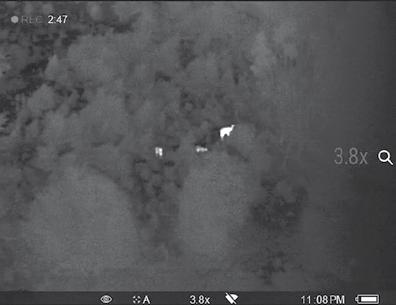
















Storm Stanley - Pāua Industry Council
In past issues we have explained some of the key features of pāua populations and biology that must be taken into account for successful fisheries management. An example is the need to make sure aggregations of adult pāua are kept intact to ensure successful spawning. With the change to Electronic Reporting regulations (ER) the pāua fishing industry has adapted previously developed systems to take advantage of the detailed and real time fisheries data being generated.
Some years ago, we responded to the idea that a day’s diving might start by the skipper checking the weather on his laptop, over a co ee at daybreak. The idea of also having a screen showing what fishing had been happening and where, would allow fine scale information help distribute diving e ort, so no one area got hammered. With that information, the decision where to go to get the best result and ensure the fishery stayed healthy was much easier. That was the start of the dashboard system.
Each pāua quota management area (QMA) is large. PAU2 QMA, for example, covers the southern half of the North Island—too large for the finer scale that abalone fisheries need to be managed at.
In the early 2000’s, these QMAs were divided into Statistical Areas—between 50 and 90 each—by the Ministry to enable finer scale reporting. Each Statistical Area encompasses a few kilometres of coastline—up to about 10—and all catch is reported per Statistical Area. Dive boats also must carry a Geospatial Position Recording device (GPR), which reports automatically via satellite to MPI Enforcement—at the finer scale of tens of metres. This provides a good close picture of what’s happening in the fishery.
Three of our 5 QMAs now have commercial Fisheries Plans in place—with the others under development— which outline where we want to be in 5 years or longer, and how we intend
to get there. The getting there is in turn laid out in an Annual Operating Plan (AOP). The AOP is guided by the Fisheries Plan, but detail agreed by harvest crews and quota owners before each season. The AOP includes stu like the harvest sizes, catch capping and e ort spreading regime for the coming season and how those measures will be implemented. Which is where the divers Dashboard system comes in.
Because of the need to spread catch as widely as possible across each QMA and to limit the number of pāua from each bed, the pāua industry has developed a web-based tool that allows commercial harvesters to work out where they should fish each day.
Dashboard input data is generated by each harvest crew, who must complete a daily electronic catch and e ort, which MPI must receive the same day as fishing occurs. To provide the data needed to run a real time dashboard, a data release consent from each dive crew is obtained. This allows the data processor to send a copy of the catch ER to an independent research provider, Dragonfly Science, who use this data to manage and populate the Dashboard system on a daily basis.
These Dashboards map the statistical areas in each quota management area and have two inbuilt thresholds, or caps—the amount of catch that can come from each statistical area and the minimum catch rate in kg/hour that is agreed as a minimum threshold.
A tra c light system is then utilised, which shows how close each statistical area is to reaching these thresholds. See Pic One—the Statistical Areas
in blue are all okay, that is below their catch and e ort thresholds, so fishing can continue. The orange areas indicate that these are getting close to one or both of the thresholds. Red signals that one or both of the thresholds have been breached, and fishing that area ends for the season
The Dashboards also show for each Statistical Area a 15-year history of the catch taken each season and the season’s average harvest rate. This historical data is provided by the Ministry and updated each year. Also shown is monthly information for the current season: the catch taken, the catch rate and the number of divers that have been operating in each Statistical Area each month.
Using the Dashboards harvesters can then work out where they could best go fishing. They can see what statistical areas have been fishing well, which haven’t been fished for a while and those areas that haven’t had many divers operating.
Most importantly, the Dashboards ensure that the industry is spreading catch across as much of the region as possible and ensuring that no one area is getting overfished. The variable voluntary minimum harvest sizes also ensures each part of the fishery has the best practice harvest size, one which for example will allow a minimum of three years of spawning before our divers can harvest them.
Future plans for this already sophisticated system include the use of dashboard data to drive

annual Harvest Control Rules, which could decide the appropriate catch levels for each fishery each year. We see this as better than the current regime where each QMA is assessed
about every 5 years.
Divers seem to like the system and use the dashboard, but we often get comments about how going fishing used be such a simple business compared to now. Divers didn’t use to need an IT degree. Which is fair enough, but like many businesses these days, increasing use of technology has to be part of the package.


Dave Hatton and partner
Heather own KIWI WADERS and from their humble old workshop in sleepy Leeston, just outside of Christchurch make by hand Limestone based neoprene waders.
It’s a labour of love with no computers in sight and all custom patterns hand drawn and cut from hefty paper.
Through polymerisation limestone rubber chips
four stages that form the basic process of converting limestone to neoprene.
Dave prefers limestone neoprene over petrochemical neoprene because of the advantageous cell structure you get which has more air bubbles trapped in the rubber.
That means the best functional performance you can get…more repellent/ impermeable to water, lighter, warmer, durable and stretchy.
“Wet or dry they remain at about the same weight” as Dave goes onto say that “we
have longstanding customers like Councils,DOC and contractors that wouldn’t choose any other waders… they want real quality…a product that performs and is durable. They also know we stand behind all our products plus we can customise so that might mean adding some abrasion panels to areas that customers know get a bit of a bashing.And we can do repairs extending the life!”
KIWI WADERS use of high-end neoprene means their waders also have “cell memory”…they mould to your body shape.
In contrast inferior neoprene suffers from delamination through blistering between the nylon and rubber,cave-in’s especially around the knee area,has no memory so the the neoprene splitting within the nylon layers.
Environmentally the limestone based neoprene KIWI WADERS uses scores pretty well too with low


environmental impact during extraction of the limestone.
The superior cell structure means less raw materials are required reducing energy costs and other environmental impacts and your KIWI WADERS are likely to last 2-3 times longer than petro-chemical based neoprene.
By reducing the replacement rate we reduce which is great for the environment given it needs all the help it can get.
KIWI WADERS can kit out the whole family with a range of high quality New Zealand designed and made products.
As the saying goes…”buy once, buy the best.”
See our ad in the directory section of The Fishing Paper or visit our website. www.kiwiwaders.co.nz

Elon Musk, Tesla and the Bet of the Century Tim Higgins Penguin Random House RRP: $38
Reviewed by Stuart Graham
Elon Musk has a distinctive
unique individual and he’s certainly that. A modern entrepreneur—slash— pioneer who attracts praise and criticism in equal measure, much has been written about the enigma that is Musk. Described
as a controversial titan of Silicone Valley, a genius and a visionary huckster, others see Musk as a modern day
crusade, be it to settle on Mars or pull off his most audacious plan—create an electric car that is quicker, sexier, smoother and cleaner than the competition.
A character with a persona as big as Musk’s is always going to be fascinating and, in this book, Wall Street
Higgins focuses on the Tesla success story, revealing a narrative of power plays, audacious recklessness,


gambles, meltdowns and ultimate triumph. It is a compelling read, insightful, entertaining and informative. Whether you are into cars, tech, or the world of corporate drama or not, this book is worth a drift through. High recommended.
In these changing times, and highlighted with recent lockdown measures across the country, we’ve all had to work a little di erently and have a few new approaches up our sleeves to help us carry on and keep things going.
Fisheries New Zealand has already been adapting its engagement approaches for some time now, from preconsultation work that helps shape fisheries management proposals, through to online forums to bring together people who can’t be in the same physical location. These processes will continue to evolve to meet the changing environment we work in, particularly when there is a need for people to socially distance and be safe.
Input from tangata whenua, and feedback from recreational and commercial fishing interests, environmental interests, and the public all play a part in fisheries management. Along with scientific information through various research channels, feedback from these groups helps Fisheries New Zealand form a picture of how fish stocks are faring across the country and determine appropriate management measures. It provides important feedback that reflects local knowledge
and insights on issues and potential solutions, that can be incorporated into fisheries management proposals ahead of any formal public consultations.
The road ahead may look di erent as we continue to navigate remote working and the virtual world when needed, but keeping in touch and working together will always provide benefits.
Local input on hāpuku and bass review
A recent example of Fisheries New Zealand’s pre-consultation work in action was the review of two of New Zealand’s hāpuku and bass fisheries in the North Island, HPB1 and HPB2.
Hāpuku is an iconic fish species for Kiwis, highly valued by Māori customary fishers, recreational, and commercial fishers alike.
Over time, Fisheries New Zealand has received feedback and widespread concern from tangata whenua and stakeholders about the northern hāpuku and bass fisheries.
In response to these concerns Fisheries New Zealand worked with tangata whenua, recreational fishers and industry and conversations were had
in several ways including through iwi fisheries forums and direct contact with stakeholders. Meetings were held across the northern region to hear peoples’ views, experiences, and ideas on a way forward to manage hāpuku and bass stocks. And this all happened before Fisheries New Zealand developed its proposals for public consultation.
Why did Fisheries do the leg-work before preparing proposals? It’s simple, getting input at an early stage helps streamline the process and ensures local knowledge forms part of the solution.
Hāpuku and bass is a unique species and previous methods, along with scientific assessments, didn’t complete the picture to support management decisions for these stocks. To do that, vital local knowledge was gained which, along with declining trends in commercial and recreational catch, indicated a sustainability risk.
The consensus during this pre-engagement work was that a ‘quick fix’ was not the answer and a package of measures was needed to support a recovery of the stock.
There are a range of management tools available and these were investigated
across both recreational and commercial fishing interests before proposals were developed as part of this year’s October sustainability review process. The options included decreasing both the commercial and the recreational catch limits and proposed changes were publicly consulted on in June.
This is the first step in the ongoing management for the northern hāpuku and bass fisheries. Industry and recreational fishing groups have already taken proactive steps, alongside Government’s involvement.
The collaborative work between Fisheries New Zealand, tanga whenua and stakeholders continues, and new methods for research and data gathering for these important stocks are being explored.

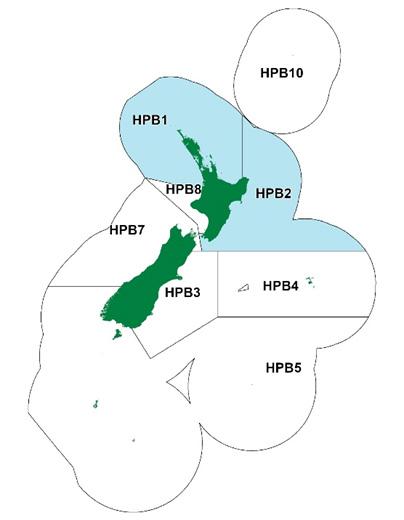



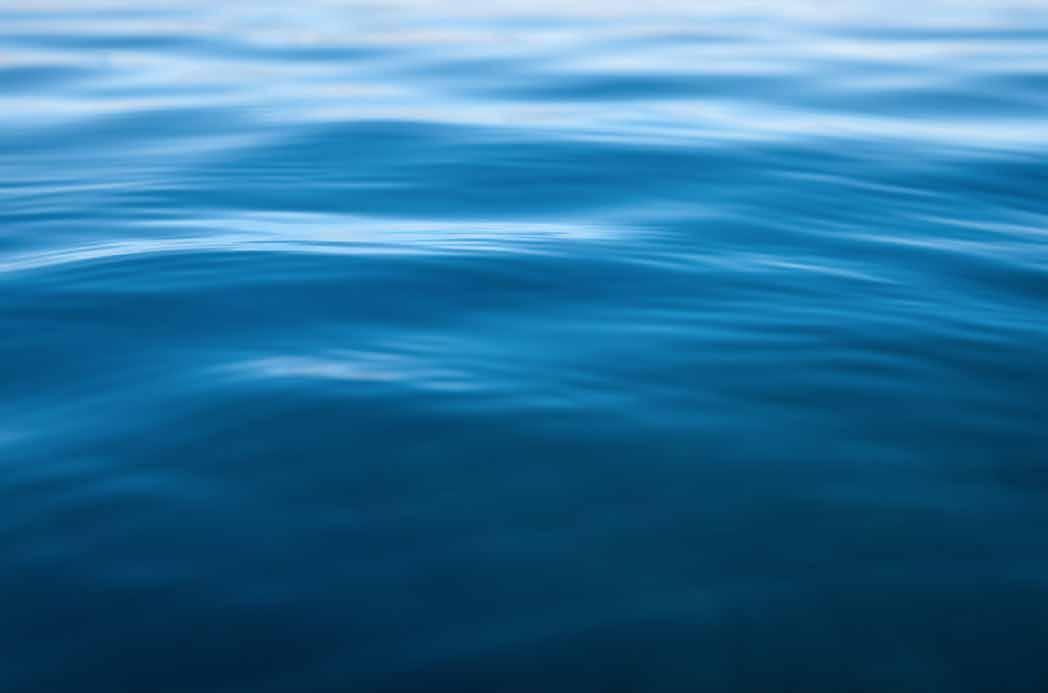

Who better to propose a closed area to commercial fishing than a commercial fisherman who has worked in the area and knows the impacts of seasonal and long-term changes?
Many New Zealanders are not aware of the efforts nationally to voluntarily close areas for a number habitats, thereby protecting management.
Even before the advent of management, commercial in-house agreements amongst themselves to either have areas closed
Marlborough Sounds it was not uncommon for set net areas separately to ensure that commercial activities were not concentrated on any one area, and similarly in Southland with trawl
There are, unfortunately, certain groups that advocate for continued closures to on a perceived impact. However, the commercial footprint has been operating in the majority of inshore regions for over 100 years. Put simply, if you are operating commercially, why would you repeatedly return to an area if it was uneconomical? The answer are there annually, and seasonally, and are being harvested sustainably. In fact, protection has been more widespread over the past 30 plus years under the quota management system (QMS).
Don’t put all your elephant eggs in one net
In addition to the QMS,
which allows for sustainable catch levels, a number of closures have been voluntarily put in place by
or benthic communities. For example, in the Canterbury
an incidental catch of egg cases during the late 1990’s—within the near coastal area out to about the 10 metre contour. Even though these egg cases—the early juvenile life stage of casing, it was believed that they were susceptible to damage.
initiative and universally agreed to close an area one-nautical mile offshore, from Banks Peninsula to just beyond Timaru, thereby protecting the predominant egg-laying territory of adult females. With 100% compliance, the results in been unbelievable.
A similar closure was proposed in Golden Bay— Top of the South Island—for juvenile rig, which became part of the Rig (SPO7) Fisheries Plan in 2007.
need to protect spawning females that gave birth to live pups, and mainly dominated the Farewell Spit area on a seasonal basis. They proposed a voluntary closed area where the larger pupping females were predominant and advocated that the species be included on Schedule 6 of the Fisheries Act, which allowed them to be released alive rather than retained and killed under normal requirements of the QMS.
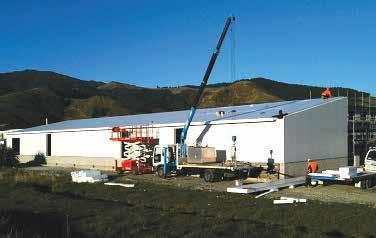
This responsible initiative therefore allowed for a high percentage of pregnant females to be released back
request was made for school shark to be included under the same protection provision.
In the late 1990’s, Tasman/Golden Bay took the initiative to rebuild the
the inner bays to protect juvenile snapper. This voluntary trawl closure is still in place and has been fully complied with. Even with the increasing abundance of snapper over recent years,
the closure, as small snapper still reside there and the need to protect them remains.
In addition, the commercial sector proactively proposed that the biennial trawl survey, undertaken by NIWA on behalf of Fisheries New Zealand, be altered to come into the 10 metre depth, rather than 20 metre depth as previously. This allows the monitoring of juvenile snapper as part of the wider biomass. This data is also included in the assessments along with data from projects that assess the catch and the ageing of commercially caught snapper.
Numerous other voluntary closures have been made by
from various size classes or from benthic communities and protected species.
shy to promote voluntary stock and ecosystem productivity.
Contrary to many unreasonable and misinformed attacks,

demonstrated, nationally, that their voluntary initiatives have proven to be outstanding management measures, that have seen
associated environment. Fisheries dynamics can change quickly, so regulated management can be very
prescriptive. Commercial initiative, and complying, is And one that has proven to managing by regulation. Taking ownership is responsible management, dividends. Long may that approach continue.




It is hard to imagine New Zealand’s wild Chinook salmon being an endangered and declining
during the last 20 years, many salmon spawning streams in Canterbury have degraded to the extent they are no longer desirable for even the smallest of alone the largest species world! Despite all the anglers have dedicated their time and money in efforts to halt this decline, by restoring these precious waterways
During April, several other keen anglers and I
Tyler McBethventured to augment notable salmon spawning areas in Silverstream, occupied during previous years by the Chinooks. Loosening and removing sediment trapped between the varied sized stones in the waterways was our main focus, as this would potentially lead to a greater fertilization result and a higher egg survival ratio than previously.
This all had to be carried out before the salmon established themselves in the their lifecycle.
On three separate days, donned our waders, grabbed a shovel and headed to the stream. Working from the bottom of the stream
up, we worked together in each particular spot for up to half an hour, making sure the gravels ended up clean as a whistle and loose enough for the salmon to dig with ease. Thankfully, weeks before, a ‘weed eater’ machine had dug deeper in parts of the gravels than previous years, making it easier for us volunteers to dig. By the end of the third trip, a total of 50 man-hours between all volunteers had been dedicated to clearing 30 notable areas, which salmon had used during the spawning in previous seasons.
More effort was carried out by the Waimakariri Council and Fish & Game North
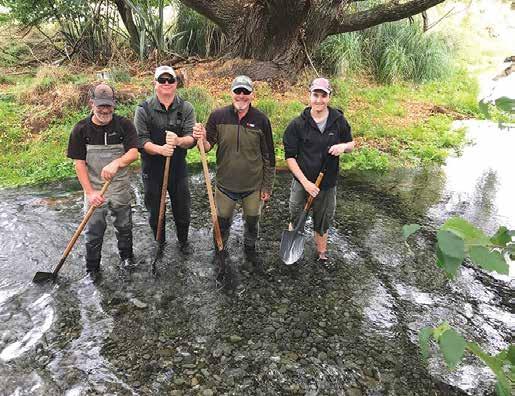
signs around the stream, asking dog handlers to keep their pets on a lead until



their spawning. This had a great response and most people followed the newly imposed rules of the area. Unfortunately, there were a select few bad seeds who trespassed on private properties to seek
intent to foul hook or kill. These troublemakers were eventually caught in the act and dealt with accordingly by the police and Fish & Game.
Once the few lucky salmon, who survived all odds, had made their way upstream, their attendance was then tallied. A total




This multi purpose matting is a soft yet resilient foam padding with a fibre reinforced fabric o ering greater durability. Only 5mm thick it assists with anti fatigue and is ideal for a variety of applications including camping, under your sleeping bag for protection from the rising cold, in the workshop, shed or garage, yoga matting and on the floor of the boat.
It is thin enough to roll up for easy storage and is great for the boot of your car to stop things sliding around and getting damaged. It is available o the roll per metre and is in store now.
Available from Para Rubber Nelson
of 27 spawning redds (nests), had been found
salmon sighted. Every few days later, the numbers would slowly decrease, with the last count, a month after and eight redds. It should be noted a total of 47 salmon made their way to the hatchery above. Thank you to Kevin Belcher, Larry Burke, Mike Agar, Greg Terras, Dave Leigh, Tony Humphreys and Emily Arthur-Moore for their efforts on this restoration project.
(Photos Kevin Belcher)

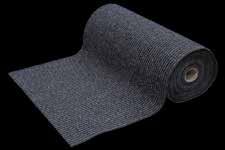


We stock hoses and tubing for any application
• Reinforced Hosing
• Fuel Lines
• Gas Tubing
• Ducting Hose
• PVC Airline Hoses perfect for air compressors
• Clear non toxic tubing great as a general purpose low pressure hose for transfer of air and water. Good for caravans.


Successful Surfcaster: Trevor Alty, a retired police o cer, is an innovative Westport fisherman who likes to experiment with rigs, baits and fishing methods.
The Fishing Paper: What is
Trevor: My father Ben
Seal Point, Otago Peninsula, Dunedin when I was four.
Spending countless hours at Dunedin Wharf with my two brothers while on Christmas holidays catching leather jackets and trevally.
TFP: What stages have you passed through on your
Trevor: As I grew I tried the lot. Boat, rock and beach but beach surfcasting remained my favourite.

TFP: What has been
Trevor: Without doubt the day I joined the 20lb plus Snapper Club. Two years ago on North Beach, Westport.
TFP:
Trevor: Any form of stream lined rig. Impact shield or imp but found the imp to be the most reliable for release.
TFP:


Trevor: Without a doubt my Kilwell Powerplay 75th Anniversay Limited Edition,
with a Diawa Entoch Long Distance Reel. Mind you my old Solaris and Okuma Axeon reel have also served me well over many years.
TFP: What baits do you
Trevor: Salted down bullet tuna is my go-to bait
targeting rig, of course it’s prawns.
TFP: What is your top tip
I don’t like Tuesdays. It’s a day when things seems to go wrong. Back when working full time, I was also playing in a band with gigs all around the region, plus the odd visit to Nelson. We’d be booked 8.00pm to midnight or 8.00pm to 1.00am but, being Coasters, oft times they’d not want to go home and would ask, “How much for another hour?”
We’d have the usual end of night routine stripping down the gear, packing it out to the vehicles and driving home. Three o’clock or even four in the morning was not uncommon.
keep the kids quiet and you’d get through Sunday okayw, then Monday would be alright but TUESDAY was the day it seemed to hit. This went on for years and even now I sometimes think, “Huh, it’s Tuesday,” when something is amiss.
However, here comes a Tuesday and it’s going to be a good one weather wise so
over that silliness and it isn’t a factor anymore. There was also the rare sight of a large skein of geese cackling past so that’s an omen, surely. First thing to go wrong was the sound of a jet ski approaching and, to my dismay, it came through
sheltered area selected to start my day. He looked as if he wanted to hang about but I gave him the tiger eyes and he waved and left. quite visible against the pale there were and they didn’t even give the chosen nymph a second glancet.
Time to ring the changes, so a different one was tied on and was also ignored as
Finally, we went to a wellknown lure pattern, with the savaging it—no hesitation, they were ‘in like Flynn.’ I’d just disengaged the lure from a sunken stump and was getting ready to cast
of nowhere and took the water in front of the boat. Then Tuesday struck again—I pliers to remove the hook
make do with an old pair
swam free nevertheless. The surgical pair were given to me years ago by a fella named Chappy and with their very long nose are brilliant. They sit open, close to hand on the ledge under the gunwales. A quick squeeze of the handles closes the nose on the shank, squeeze opens them again. A long needed dung-out in the boat was performed the cloths through the wash and vacuuming the dirt and degradation from the deck. to return to my used box. During this process, things had been moved around, so I had hidden the longnosed jobbies from myself. Naturally, found them again when I got home. To my
Trevor: Without doubt one word, “perseverance.”
TFP:
Trevor: North Beach. Westport. It’s a four minute drive from my place. Always produces.
TFP:
Trevor: I have delved into the dark side, and purchased a Seahorse Kontiki, which
to take too long to set and retrieve. Normally only use it when friends visit and I know it will catch me something every time. Have over the last few years. Now that is fun. Can drop the gear well out beyond the waves and still get the fun and cheat a bit though and use an electric reel but anything decent I wind in manually. I actually have a squadron. Three Phantom Drones and a Splashdrone. The surf casting rods don’t sit around gathering dust either.
TFP:
Trevor: I was a mad keen gold fossicker and underwater gold dredger, having had several successful claims up the Buller Gorge in the vicinity of the Berlins area. Now at 73-years-old that’s a bit too much for my aching ole muscles and back.
TFP:
Trevor: Improving year by year. Especially snapper catches.
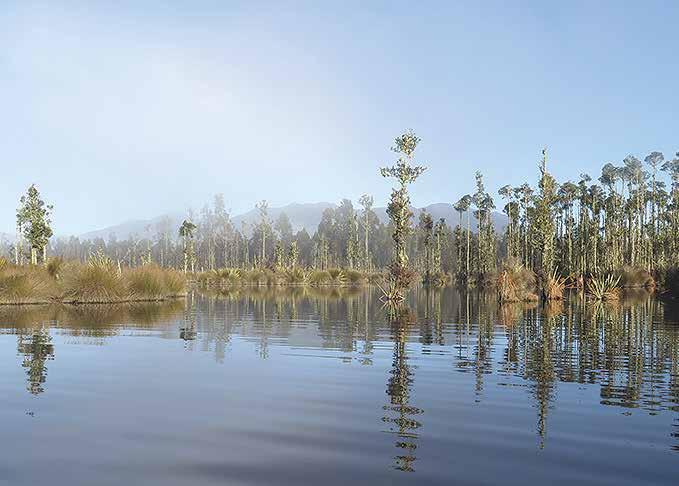
surprise they’d been in the boat all along. Saint Anthony or just happenstance?
The excitement and interest continued and when another one had fair slashed the Hamills and was being played, not one, not two, not three but four more came to see what the commotion was, trout central. Yes I’ve beaten the bogey—well maybe till next Tuesday!


























With recent Olympic Games, all the talk was about going for gold but, for me, it is all about going for silver. By silver I mean the mighty chinook salmon that arrive off Kaikoura each year.
some years are better than others and, as an example, last year I caught none! Generally, I like to start having a cast in September to see what is about and to make sure all my gear is working as it should.
So on September 3 my partner Fiona and I headed for the beach to have a wee look to see what was happening. We spent a pretty uneventful half hour having a few casts and
Malcolm Halsteadbasking in the amazing Kaikoura scenery. On one of my casts, I was surprised with a solid take and the sight of a good salmon breaking the surface. Holy shit, I actually had hooked a salmon this early in the awesome, with good strong runs and lots of splashing on the surface, while Fiona captured some great action shots on her phone.
The swell was quite large, which meant actually
to be tricky. After three attempts at beaching it, I
there before me was a nice ten pound silver medal! You just cant beat that feeling of landing a truly wild sea run
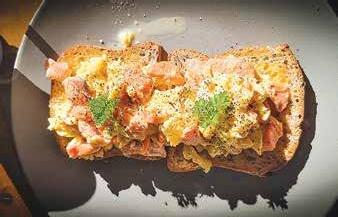
salmon and the smile on my face could not be removed.
Fresh fried salmon was on the menu for dinner and man did it taste amazing.
I went back down the following afternoon and, although there was a couple caught, I didn’t have any luck.
On Father’s Day, I rose early and headed down to the beach at 7.00am. I was both surprised and excited to see a guy sitting on the beach with two salmon and congratulated him on his effort. He said there had already been eight caught. That really got the blood pumping.
half way through the retrieve,
I was blown away by a take.
soon joined me on the bank.
‘How good was that?’ I thought as I admired the six
caught up and down the beach, which is so good to see. After half an hour I got another take but this one didn’t stick. Shortly
number two for the day, which, once landed, tipped the scales at eight pound.
So by 8.00am I was on my way home with two great and shared amongst family and friends. Things are an Olympic season of silver.




freediving range of equipment at the top of the South Island just got a whole lot bigger thanks to Marine and Outdoors in Blenheim.
Marine and Outdoors is now Marlborough’s home of Ocean Hunter, a dedicated
free diving equipment and knowledge. The top of the south boasts some of the best diving in New Zealand, so it was a no brainer for the team at Marine and Outdoors to bring such an extensive range of products to the doorstep of the Marlborough Sounds.

to bring Ocean Hunter to Blenheim”, says Marine and Outdoors General Manager, Adam Marshall. “Having such a massive range of gear in one place is going to recreational and commercial spearos alike”.
The Ocean Hunter range includes names such as Rob Allen, Freedivers, Moray, Ruku and Garmin, and will give locals the luxury of choice when it comes to their dive equipment. The huge range also offers an excellent opportunity to get hands on when making their purchase of new gear.
The extensive range is also backed up by customer service from those who not only talk the talk, but are also using their weekends to put it all into practice. “Across the whole team here at Marine and Outdoors, we’re all genuine ambassadors for what we do and what Marlborough has to offer”, says Adam.
“We’ve welcomed Brett Orchard to the team, an avid local spearo who’s hands on experience and passion helps him lead the Ocean Hunter experience”.
The Marine and Outdoors team encourage anyone thinking about giving
Lowrance®has unveiled its Lowrance® App this week, including a set of new premium features, advanced functionality and seamless synchronization with the full range of Lowrance fishfinders and chartplotters.
The Lowrance App is free to download and o ers a rich experience that includes free up-to-date and detailed nautical charts from C-MAP®, creation and management of all your personal waypoints, routes and tracks, along with the latest marine weather, important points of interest and much more.
The App allows you to register your Lowrance device(s) ensuring you have the latest software, manuals, information and tips related to your devices, as well as the ability to synchronize data, mirror and control right from your mobile device. It’s available on both the Apple Store for iOS and Google Play for Android.
“The ability to easily manage, create and plan your waypoints, routes and tracks in your app and then seamlessly synchronize with your Lowrance display from anywhere on the boat right from the palm of your hand will enable anglers to spend
more time doing what we love: fishing,” said Lucas Steward, EVP of Lowrance. “Whether you are using the free or the new premium version, we are confident all anglers will be blown away with the highresolution, detailed C-MAP charts.
The premium version of the Lowrance App includes custom depth shading – a key feature for anglers – as well HighResolution Bathymetry Charts, o ine maps and global charts, Automatic Identification System (AIS), Lowrance App Tra c, 5-day weather along the route and 5-day weather overlay, GPS navigation data and line and track record.
“While there is a lot on o er in the premium version, the simplified ‘freemium’ option still provides a long list of very useful and valuable technology and functionality for anglers, right to your smart phone or tablet at no cost,” added Steward.
The detailed C-MAP charts on the app are carefully designed to highlight what is most important at any given time during your fishing experience, maintaining accuracy and a clean, uncluttered view at key fishing locations for the ultimate fishing experience.

go to come down and chat to Brett and the team. “As a team, we always want to
of the most sustainable ways
everything locals need to get in the water and give
a bad thing” says, Adam.
“Kitting locals out so they get out there and enjoy our big blue backyard, but also ensure it’s just as enjoyable in the future is part of the buzz”.
Alongside the range of gear, Marine and Outdoors will also be offering Marlborough based breath hold courses, so get in touch for more information.

Free for all users
• View the latest nautical charts
Manual and Autorouting
Manage your Waypoints, Routes & Tracks
• GPX Import & Export
• Thousands of Points of Interest
Marine Weather Forecast
• Weather Overlay (24 hours)
• Weather Along the Route (24 hours)
Chart Personalization
Measure Distance Tool
• Waypoints & routes synchronization with Lowrance compatible fishfinders
Device Support: Registration, Guides and Software
Updates
Premium Features
GPS Position & Full Navigation
• O ine Maps (Global)
• 5-Day Weather Along the Route 5-Day Weather Overlay



• High-Resolution Bathymetry
• Custom Depth Shading
• AIS
Tra c: View other App users around
• Shaded Relief
For more information on Lowrance and its tournamentwinning fishfinding technology, please visit www.lowrance.com
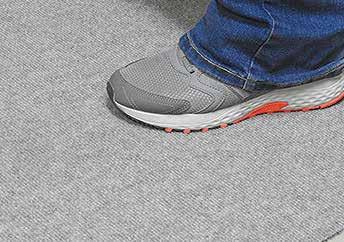

As a new hunter, the allure of wild venison was pursuing. I wanted to work for it though and to truly
elusive red on the ground. I wanted it to be on public land. With this in mind, my good mate Dan and I planned a mission.
After reaching the tops the excitement levels were high and we were both desperate to get into some glassing and hunting. However, the weather had different plans and the fog and wind quickly forced us to shelter in the tent, where we spent the next 23 hours hiding out.
With so much pent-up excitement, I barely made it through the night and was ready well before daylight, practically shaking in anxious anticipation for the sun to peek over the mountain tops. As the
illuminated the soft layer of snow settled on the tent, we were greeted by a crispy morning and stunning view over the mountain range.
After a successful morning hunt for Dan, bagging a young chamois buck, we made our way across a small saddle where I found myself continuously checking down into a large basin, still hidden from the warmth of the sun. It looked perfect for a deer. I stopped dead in my tracks. Two deer had just made their way out of the bush line.
After quickly signalling to Dan, we scrambled into position to see what we were dealing with. A big, old dark hind and a yearling were feeding out into the basin as the sun crept over the saddle. Together we planned the stalk.
We crept down towards the deer, along the bush
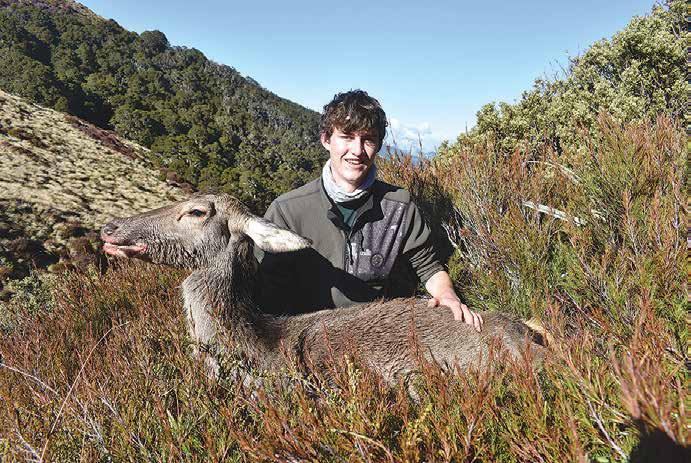

line, in almost clear view for several hundred metres. Finally, we were almost close enough for a shot and on our stomachs to a small tuft of grass, which seemed perfect for a shooting stand. My heart pounded and my hands were shaking as I lined up the hind in the
feeding along a steep slope across a small creek, only 130 metres away. Sitting the crosshairs exactly behind the front shoulders, I took a deep breath and squeezed the trigger.
the silence of the mountains and the deer stumbled on its feet. I fumbled to reload the
the scope again, I started to squeeze off the trigger again only to hear Dan telling me not to take a second shot.
once again. The hind dropped.
Barely able to contain our excitement, we started screaming and shouting. After grabbing all our gear and making note of where the hind had dropped, we made a mad dash over to her. Positioned in some scrub on a steep face, she was huge with a beautiful dark pelt. After a couple
bumps and yells, we rolled her down to the edge of the creek, where we got to work
Swarovski Optik, world leaders in advanced optics, have released a range of hunting and outdoor accessories, which include the stylish yet functional
GP Gloves Pro. Designed for a range of outdoor adventures, the GP Gloves Pro feature pre-shaped
with the result of a glove skin. The index and middle screen compatible, a unique innovation that creates a

whole new dimension of
The underside of the gloves are lined with soft pliable leather, reinforced in high-wear places to give maximum grip and durability, while remaining stylish and elegant. Attributes that will see these both the outdoor arena and dress or fashion market.
The upper Swarovski green material is made from Sympatex(R) membrane, which is water and wind resistant yet breathable. It is insulated for warmth but very lightweight, so is less cumbersome to wear and certainly not as bulky as most other outdoor gloves.
In fact, a design priority of Swarovski Optik is that their products produce
Reviewed by Daryl Crimpand these gloves have been handling and optic use is not impaired. You don’t need to remove the gloves in order smartphone for that matter.
wide range of uses, from hunting, tramping, general outdoors, mountain biking and golf, through to general daywear and driving gloves. Available from Swarovski stockists nationwide: RRP $139
For added comfort and warmth, pair the GP Glove Pro with ML Merino liners: ML Merino Liner Gloves
Made from 95% Merino wool and 5% Spandex, the non-slip surfaces in the ensure a good grip of the binoculars and optimum
butchering and skinning.
been perfect and the deer had been dead on its feet. My second shot dropped her on the spot.
With packs full of meat and both the back legs and the skin on my shoulders, we climbed out of the basin back to camp.
I’m absolutely stoked especially to get one on public land after an awesome stalk and a bit of effort. I’m even more stoked free range venison, which will feed my family for some time.

operation of the focusing wheel. Operation of touch screen surfaces with thumb, a useful design innovation. Use as independent gloves or as thin inner layer in combination with GP Gloves Pro.
Available from Swarovski stockists nationwide: RRP $79












